 Your new post is loading...
 Your new post is loading...
The Samsung Galaxy Note 7 debacle is a master class in how not to handle a crisis. Much will be investigated in the months ahead. But what I find particularly interesting is how Samsung communicated what was happening at each stage of the crisis.
This weekend, the US DOT banned the Galaxy Note 7 on all US flights, categorizing the phones as “forbidden hazardous material.” It doesn’t get much clearer than that. Yet, just a few days earlier, Samsung portrayed the situation as “temporarily adjusting the production schedule to ensure quality and safety matters.”
The gap between “forbidden hazardous material” and “temporarily adjusting the production schedule” is a massive chasm. A few weeks earlier, Samsung similarly described a “global product recall” as an “exchange program.”...
For some it is a prank, akin to a crank call for the digital age. For others, it’s a narcissistic effort to rack up likes and followers. Others see political opportunity and want to hijack people’s attention for their own political or commercial gain. I've written before about those who originate misinformation and spread fake images during crises and disasters. But once the misinformation is out there, why do people share it? And how can understanding this question help us combat rumors and foster more trustworthy coverage and reporting during breaking news? People want to helpPeople have never felt as close to breaking news as they do today. It shows up daily in our social media feeds, through graphic pictures and autoplay videos, unfiltered and raw. A series of tweets or a Facebook live video can bring us to the scene of a shooting, a bomb explosion, an earthquake. The result can be, as one author writes, a “burgeoning sense of helplessness. ”In the face of a tragedy unfolding in front of you a lot of people want to help. They want to tell their followers what is going on, to pass along important information, share dramatic photos that help add context to the chaos. Sometime these posts are even accompanied by warnings, safety advice, and specific calls out to friends and followers who might be affected. Matt Stempeck has studied how people mobilize online to support each other through “peer aid” in times of crisis....
Take 2010, when BP was confronted with one of the biggest oil spills in history. It appeared that the organization waited to reveal all the facts until they knew that the spill had become unstoppable. Or 2015, when the U.S. Environmental Protection Agency and the California Air Resources Board uncovered widespread cheating by Volkswagen on emissions standards – something Michael Horn, president and CEO of Volkswagen America, was alerted to a year earlier but remained silent. Even when the EPA confronted the company with their findings, Volkwagen missed the opportunity to communicate first. And more recently, The Wall Street Journal revealed a culture of secrecy at blood-testing start-up Theranos and questioned the effectiveness of the technology driving their operation, leading to a federal investigation.
In each case, the organization failed to self-disclose a crisis, and as a result, each faced enormous negative publicity that continues to draw critical attention from a broad public. Even Hollywood is interested: movies have been made, or are in the works, about all three scandals. The longstanding impact of a failure to acknowledge a problem cannot be overstated.
How should companies handle a crisis differently? Our research focuses on an alternative approach, one that is referred to as “stealing thunder.” It involves self-disclosing crises and major issues before media gets hold of the story. Earlier studies on stealing thunder have found that self-disclosing organizational crises increases the credibility of organizational spokespersons. When an organization breaks the news about incriminating events, these problems will also appear less severe. In addition, organizations that steal thunder are considered more reliable and consumers are more inclined to continue purchasing their products. Our recent study adds to these findings by examining if self-disclosing an organizational crisis may be as effective as it is because old news is considered no news. When self-disclosing incriminating information, individuals will perceive the subsequent negative publicity as old news, and hence, pay less attention to it....
It’s open season on Delta’s handling of the PR crises following its cancellation of more flights this morning on top of more than 1,800 yesterday and Monday after a computer problem in Atlanta stranded passengers around the world. Consider the four-word lede on the AP’s Scott Mayerowitz’ story: “We don’t cancel flights.” The next graf takes down that bit of hubris quicker than a glitch in a power control module can make a finely tuned system go kaflooey. “That’s been the message for the past two years from Delta Air Lines,” he writes. “Double-decker buses roamed the streets of New York, wrapped in ads proclaiming ‘canceling cancellations.’ Delta executives boasted about the number of days without a single flight scrapped.” Mayerowitz posits that the cancellations and delays, coupled with its own delay in explaining what really happened, “threatens to wipe away all that trust that Delta has worked to build” and has allowed it to proudly get 110 cents for every dollar charged by its competitors. That’s tempered, however, by S&P Global Market Intelligence’s Jim Corridore telling him the airline might “get a pass” if the incident proves isolated....
What's a little e coli among friends? That's the question US fast-casual dining chain Chipotle will soon be asking its best customers. After publicly eschewing the idea of launching a customer loyalty programme last year, Chipotle executives said on an earnings call last week that they aim to stem the flood of frequent diners abandoning the chain with - wait for it - a loyalty programme. Though the programme is likely to be temporary, Chipotle hopes it will reignite customer passion for bowls and burritos. The problem: Chipotle executives still seem to display a fundamental misunderstanding of the purpose of loyalty programmes.
The announcement was one of the only positives in an earnings call that can only be described as apocalyptic: same store sales fell nearly 30% in the first quarter of 2016 and the company posted a net loss of $26.4 million. The company has tried everything to pull out of the free fall: giving away millions of free burritos, BOGO offers, national advertising campaigns; nothing has worked. Money quote from reporter Virginia Chamlee over at eater.com:
"The aim is to target the most loyal Chipotle consumer — i.e. the one who visits 25 or more times per year. The company saw the largest declines among its top loyal (25+ visits a year) and its 'light' consumers (those that visit two to five times per year). Noting the decline in visits amongst its once most-loyal customers, [Chief Marketing and Development Officer Mark] Crumpacker said the company would love to get that 'habit' back up. "We do believe it's beneficial to us to get people back in the habit of visiting Chipotle [as often as they used to]."...
No matter how well you prepare, sometimes things just go out of your control. It is not always possible to prevent a crisis. When it comes to PR campaigns, learning from your mistakes can be too costly. The trick should therefore be learning from other people’s mistakes.
According to the First Research study, the U.S. public relation industry is estimated to be at $10 billion, with above 7,000 U.S. firms in action in 2013. Still a large number of businesses suffer the adverse effects of PR disasters. Why is it so? Let’s take a take look at the factors that lead to PR disasters
Apple’s in a bind. The FBI wants them to crack the encryption on a San Bernardino terrorist’s iPhone. Apple believes that’s a dangerous precedent. Apple CEO Tim Cook’s open letter is breathtakingly simple and clear. Learn from it.
Here’s Apple’s logic: Breaking encryption creates a “back door.” Any such back door would inevitably get out. Thieves and foreign governments could use it. And then none of our data would be safe. Financial flows and everyday privacy use similar encryption — this precedent would threaten the same problems in those domains.
This is an unpopular position. Gloss over the details and it seems like Apple is protecting a terrorist. As Donald Trump, as always articulating the simplistic view, said, “Who do they think they are?”
In this situation, a press release would be useless. Instead, Tim Cook published an 1,100-word, plain-language open letter explaining the company’s position. I’ll take it apart and show you how and why it works. Excerpts below, with my comments in brackets....
Every publicist feels a combination of schadenfreude and cold-sweat relief upon reading about a crisis involving someone else’s client. And is it me, or does it seem that entertainment publicists have an extra helping of these opportunities? Whether it’s due to naughty personal behavior or corporate shenanigans, we all get our chance at crisis management at some point. This little multiple-choice quiz based on hypothetical scenarios (some of which may or may not bear a resemblance to real-life episodes) can help us all keep our skills sharp.
Two months after The New York Times‘ devastating takedown of Amazon’s culture, Amazon fired back. Where’s the whole truth here?
Where’s the whole truth here? There is none. Because by definition, stories always leave out more than they include.
As briefly as possible, here’s what happened. On August 15, the Times wrote about Amazon’s “bruising workplace.” Jeff Bezos emailed his employees a non-denial denial of the story. Two months passed. Amazon PR head (and former Obama press secretary) Jay Carney ripped the article in a post on Medium. The executive editor of the Times, Dean Baquet, responded. Carney rebutted. Finally — well, finally is a word I can’t really use here, but anyway, two other Times reporters published a story about the fight.
As I attempted to retrieve the truth from this food fight, this is what became clear. There is none. Because by definition, stories always leave out more than they include.
A disaster recovery plan is more complicated than just pressing the restore button on your backup plugin, and is definitely something you want to be familiar with before you actually need to put it into action on your WordPress site.
We’ve compiled an ultimate checklist, covering the circumstances that lead up to the disruption or break in service. You need to know What, Where, and When before you can determine How and Why. In today’s more complicated technical world, you also need a checklist that can help you determine the Who.
This is not just another article listing software tools – we already have lots of great “best of breed” plugins and themes articles. We have instead summarized best practices that will help guide you to a successful recovery of your WordPress site. We recommend old-fashioned, low-tech methods that complement excellent software....
Gawker recently turned food marketers' heads with a 2,500-word takedown of blogger, dietary guru and anti-GMO activist Vani Hari, aka "Food Babe." Author Yvette d'Entremont, who started a rival blog under the "Science Babe" moniker, asserted that Hari peddles easily disproved pseudoscience designed to frighten people into emptying their pantries of "toxins" and send angry emails to major food conglomerates.
Vani, a New York Times bestselling writer and TV talk show guest, responded with a can't-we-just-be-friends lament before casting d'Entremont as a "biased," pro-pesticide advocate promoting that most unpopular of agricultural villains—Monsanto. She even created a disclaimer for readers who visit her site from links in the Gawker post: "Coming from Gawker? Warning: I believe you should have both sides of the story before you make an informed opinion. Read the other side of the story here."
A larger trend is lurking beneath this spat over digital influence: America is facing a growing crisis of credibility in food labeling. And as consumers struggle to decide whom to trust—passionate bloggers or major food brands—agencies can get caught in the crossfire....
So how important is it to make sure that your corporate website – and therefore your crisis communications home base – is mobile-friendly? Pretty important.
And I’m not the only one who thinks so, Google thinks so as well.
Google has actually started to penalize websites that don’t provide mobile users with a mobile-friendly experience. This means that, in (and out of) a crisis, if your website is not mobile-friendly, not only are you making it harder for your stakeholders to navigate through your site and easily read your communications, but Google may be penalizing your website’s search engine rankings....
Congress is looking for answers as to how two nurses got infected, and why officials at Texas Health Presbyterian Dallas hospital sent home Thomas Eric Duncan—who would later die of Ebola—when he first came to the hospital with symptoms and said he was from Liberia.
In written testimony to the U.S. House Energy and Commerce Committee’s Subcommittee on Oversight and Investigations, Dr. Daniel Varga, the hospital’s chief clinical officer, said, quite simply, “We made mistakes.”
“We did not correctly diagnose his symptoms as those of Ebola,” Varga wrote. “We are deeply sorry.”
He goes on to say that officials don’t really know how Nina Pham, the first of two nurses at the hospital diagnosed with Ebola, could have contracted the disease. Varga wrote...
|
No matter how secure and well-placed a brand appears to be, the danger of an online reputation crisis is always lurking. The open nature of modern day communication channels, like blogs, social networks and review sites, means that one bad customer experience or a small lapse in service standards can quickly damage a brand’s reputation. Negative experiences shared more often Research shows that consumers are much more likely to share negative experiences on social networks and other public platforms. A damaged online image can have severe effects on a brand’s value and business performance. A study by Deloitte shows that nearly 41% of companies that experience a negative reputation event reported loss of brand value and revenue....
It was late morning on Friday, October 16, when Elizabeth Holmes realized that she had no other choice. She finally had to address her employees at Theranos, the blood-testing start-up that she had founded as a 19-year-old Stanford dropout, which was now valued at some $9 billion. Two days earlier, a damning report published in The Wall Street Journal had alleged that the company was, in effect, a sham—that its vaunted core technology was actually faulty and that Theranos administered almost all of its blood tests using competitors’ equipment.
The article created tremors throughout Silicon Valley, where Holmes, the world’s youngest self-made female billionaire, had become a near universally praised figure. Curiosity about the veracity of the Journal story was also bubbling throughout the company’s mustard-and-green Palo Alto headquarters, which was nearing the end of a $6.7 million renovation. Everyone at Theranos, from its scientists to its marketers, wondered what to make of it all....
Never ruin an apology with an excuse." – Ben Franklin
In less than 24 hours, two of the biggest stories in the world involved some kind of "apology" for offensive behavior and/or lying. Last night in Charlotte, North Carolina, the notoriously unrepentant Donald Trump shocked observers by expressing "regret" for words that "may have caused personal pain." And this morning Ryan Lochte issued a widely criticized apology for "not being more careful" with how he described an incident in which he lied about being held up at gunpoint in Rio de Janeiro.
Neither of them qualified as a true apology since they both offered an excuse for their behavior, failed to give a detailed account of what happened, failed to acknowledge or specify the hurt and damage they’d caused, and didn't take responsibility for the situation.
A proper apology is "an exercise in honesty, accountability, and compassion," says interfaith minister Lauren Bloom, the author of The Art of the Apology. Of course, it's difficult and nerve-wracking and fraught with tension. But it's the right thing to do. So above all, be sincere: "It's the essence of an apology."...
When a company weathers a big change, it can be a test of leadership. Here's how what some CEOs who have been through it learned.
Sometimes it’s clear that the writing's on the wall for an organization: Things aren't going well. And during those times it’s even harder to communicate and lead.
Whether a company figures out its end vision is unattainable without the help of a deep-pocketed investor, or if it simply sees the financials and understands that the run rate is coming to a close, these are pivotal and emotional times for individuals at the top. More importantly, they're the hardest moments to strategize....
After talking with several business leaders who have steered companies during times of crisis, it’s clear that this is one of the most defining moments in an executive's career. When things are going swimmingly, a founder can gin up an image of success and determination. But when business goes south, that’s the real moment a leader needs to show his or her true colors....
In April 2013, Vani Hari, activist and author of the blog Food Babe, petitioned Kraft to remove from their products the petroleum-based dyes that have been linked to ADHD and require a warning label in the European Union. A spokesperson for Kraft responded only that Kraft was following the FDA guidelines for what could and could not be in their products. The following month, Hari posted a hoax video showing a warning label on Kraft Macaroni and Cheese in a U.K. grocery. Hari then used the video to spur her followers and those of other activist groups into hijacking Kraft’s Facebook page. This study examines the impact of the video hoax and a growing trend of activists using the target organization’s social media sites to propagate campaign messages opposing the target organization’s practices. Method The websites and blogs of Kraft and Food Babe were examined to identify official comments regarding the controversy. Media coverage of the case was then collected via a Google News search and examined to create a case timeline and narrative. An interview was conducted with Hari and a Kraft spokesperson provided statements via email. User generated comments added under Kraft’s posts on their Macaroni and Cheese Facebook page from May 28 to June 15, 2013 were collected and coded as either positive/neutral or negative....
One of the trickiest challenges you will ever face when launching and growing your business is doing your public relations right. In its most generic terms, public relations involves activities that promote a positive image and foster goodwill in order to increase sales while conveying the right message. Reputation is everything for a brand and PR campaigns play important role in improving the brand value. Other advantages include:Improve engagement and image building. Reaching new target markets sounds great, doesn’t it? But one wrong step and you are likely to lose it all....
It’s almost as if Volkswagen AG CEO Matthias Müller studied the performance of infamous British Petroleum CEO Tony “I’d like my life back” Hayward and said, “Yes, that’s how I’d like to respond to our own company’s crisis.”
VW, which is in the midst of an emissions-rigging scandal affecting millions of vehicles, has been accused by regulators of intentionally programming its engines to fool laboratory emissions tests.
Last week, Müller gave a phone interview to National Public Radio that went so poorly, he had to ask for a do-over. The first time around, the reporter asked him about the perception that his company has an ethical problem, not merely a technical one. He responded, “It was an ethical problem? I cannot understand why you say that.”
As you might imagine, that answer landed like a lead balloon—and his staff quickly blamed his tin-ear response on a noisy environment. According to Bloomberg Business...
Police departments around the country are using high-powered analytics software to comb social media and calculate threat levels for individual suspects before they are arrested, according to the Washington Post, which first reported the news.
The program, called “Beware,” uses addresses awaiting police response, finds the names of individuals who lives there, and checks their name against social media and other publicly available sources of information like property records and prior arrests to determine if they may pose a threat to responding officers. In one example cited by the software’s manufacturer, Intrado, an individual who is a military veteran with post-traumatic stress disorder and posted troubling comments on social media would raise a red flag....
Days after taking over as Twitter’s permanent CEO, Jack Dorsey has laid off 336 people. You could learn a lot from the straightforward, honest, and sensitive way he tells his company about it.
The corporate layoff is a communications trap for leaders. It makes them insecure, so they they adopt HR bullshit and talk about “reduction in force”, “rightsizing”, “eliminating positions.” But they don’t have to. Here’s how Jack Dorsey told Twitter he was letting a big chunk of the company go....
What do you do when your business has a poor reputation online or received a poor review?A lot of businesses and individuals often wonder how they can better their online reputation.
First, let me tell you how NOT to address negativity online. Don’t create fake reviews. Fake reviews, especially the kind that are paid for, are easily identified by your potential consumers and that will break their trust in you. In addition to being caught by potential consumers, you will likely be caught by site owners and/or Google. For sites like Yelp, they have publicly shamed businesses that they have caught....
Whether it is fair or not, when your business is tweeting during a major negative news event, offense can come quickly.It’s important for social media managers to have a pulse on these events, and a plan in place to pause your scheduled content so at not to seem “out of touch” or insensitive to your audience when earth rattling news occurs.
Here are five considerations to make when a story breaks...
A few years ago, my team and I were launching a leadership development program for a client. Just before we launched the pilot program, the company was hit with a high-profile scandal. A couple of rogue executives were caught playing around with the company’s finances and millions of dollars went missing. The ensuing scandal rocked this once-great company, leaving its reputation in tatters. The executives were charged.
When we kicked off the pilot session a few months later, the scandal quickly became the elephant in the room. It was clear the participants needed a forum to express their personal views on those events. We could feel their deep-seated anger, and we realized we had to bring it out into the open.
|
 Your new post is loading...
Your new post is loading...
 Your new post is loading...
Your new post is loading...










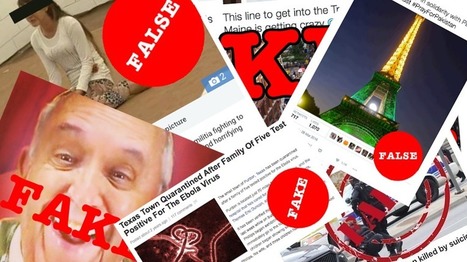


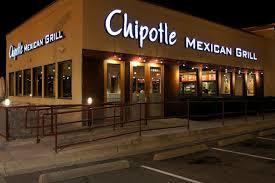
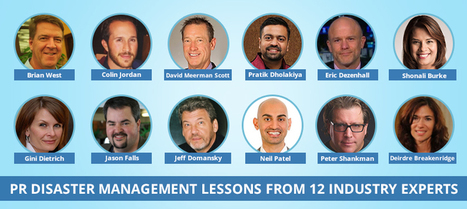
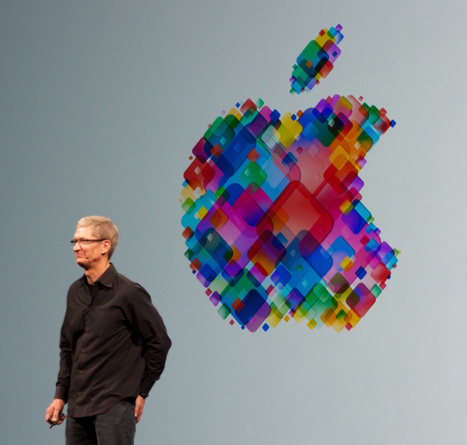

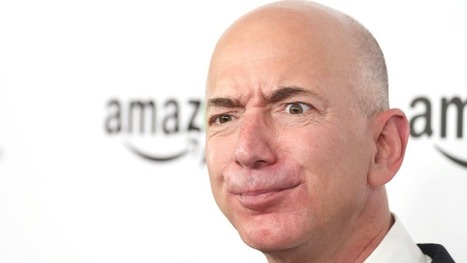
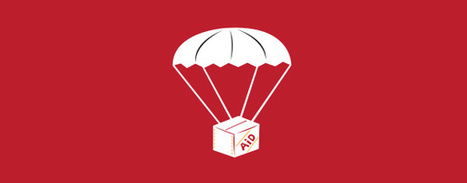



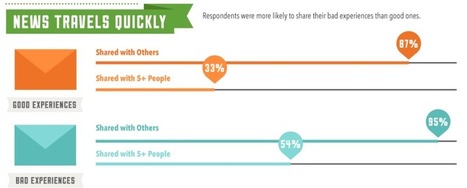




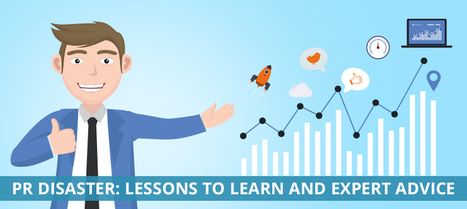



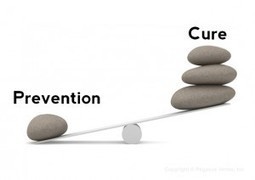
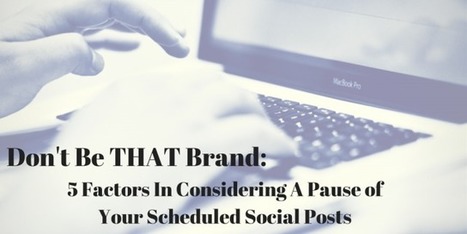






Tom Fishburne's cartoon says it all. PR people need to give advice on how to close the gap between reality and crisis weasel words.